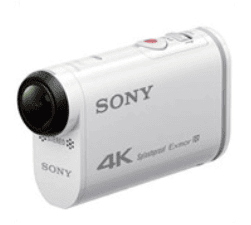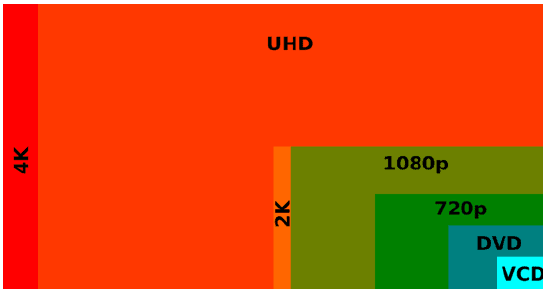Surveying in the 21st Century.


Over the last few years we have seen the introduction of many new technologies that could, on the face of it, make the surveyors’ life easier and enable them to give a better service to their client. In this article we look at some of the new innovations and evaluate their possible use for residential surveying.
Drones
A drone (unmanned aerial vehicle) with a remote controlled camera attached allows surveyors to see hard to reach places without the use of scaffolding or cherry pickers etc.
Bonningtons Chartered Surveyors from Yorkshire use a drone to inspect very tall buildings. Their website says:
“We also offer a unique cost effective method of inspecting very tall buildings as an initial planning tool for Clients without the need for expensive scaffold, hydraulic platforms, or other traditional methods of inspection. Using our remote controlled quadcopter–to which a 12mp stills camera provides crisp images, a Panasonic 1920x1080p @ 50fps camcorder provides HD quality images, and other equipment and cameras that can be agreed with the Client can be attached–we can provide properly planned solutions very competitively.“
As reported in Modus, the RICS magazine, property and construction consultancy Tuffin Ferraby and Taylor used a drone to determine the condition and maintenance requirements of the Guildhall and Theatre Royal, Windsor buildings with unique access issues.
Both firms have reported several issues that they needed to consider when using drones. In particular the following rules apply:
- In the UK you need permission to fly commercially, i.e. if you are receiving a fee from the operation of the aircraft; additionally, the pilot of the drone also needs to be licensed by the CAA and insured.
- The flight must not endanger anyone or anything;
- The aircraft must be kept within the visual line of sight (normally taken to be within 500 m horizontally and 400 ft vertically) of its remote pilot. Flights beyond these distances must be approved by the CAA;
- Drones used for surveillance purposes are subject to tighter restrictions with regard to the minimum distances that you can fly near people or properties that are not under your control;
- Drones should not be flown over or within 150m of a congested area.
There are other limitations on the use of drones. Tuffin Ferraby and Taylor, in particular, reported that because the work they were doing was so close to Windsor Castle they also had to pay particular attention to security concerns.
Drones clearly have a role to play for the inspection and assessment of ‘hard to access’ roof surfaces etc. and on historic or particularly tall or inaccessible buildings are probably essential. However, all of these issues suggest that the use of drones for regular domestic inspection work may not be practical. We would love to hear if any residential surveyor has been using drones successfully.
4K cameras and poles
4K refers to the horizontal resolution size used by 4k recording equipment and 4k displays. Measured in pixels, it represents how much detail can be captured or displayed, in this case 4000 pixels wide. It is around four times the size of standard HD which is 1080 pixels; the diagram below illustrate this.

4k cameras differ from ordinary cameras only by how much detail can be captured and therefore displayed. The human eye has a resolution of 576 mega (million) pixels, therefore the more pixels a camera can capture the more realistic the image will look.
Search for 4k cameras on the internet can cause confusion as currently their main commercial use is for movies because TVs are not able to display the images to the same level of quality. If you display 4K on a HD TV you will only get HD quality and so the 4000 pixels wide detail gets toned down to 1080 pixels wide.

4K Video cameras start at about £1000 plus, but there has been a growing sports market for 4K cameras. Consequently much cheaper versions are now available through companies such as GoPro.
Len Cannon Qualified HI writes:
We first adopted the use of pole cameras two years ago to assist with all of our activities but it has been invaluable for providing insurers with the quality of evidence they are looking for. Another benefit has been the ability to show homeowners the video so they can see for themselves what problems need addressing.
We use the pole cameras to ascertain three scenarios to:
- Identify defects;
- Verify what repairs have been undertaken (and the quality of works);
- Eliminate potential issues.
Equipment
There is a wide range of roof inspection solutions and therefore individuals must satisfy their own requirements. Increasingly, smart phones have the ability to remotely operate and view images from digital cameras but you do need to make sure they can cope with the distance between the two devices.
Poles come in a variety of lengths. We invested in an 8m pole and this length of pole has been sufficient for most scenarios. We would certainly not use a shorter pole. However, on reflection, we now consider that a 10m pole would be better.
We did a lot of research on the camera and eventually opted for a high definition 4Km which is mounted on the end of the pole. The camera we use was developed with action sports in mind (the sort of camera that mountain bikers attach to their helmets. You can see examples of cameras in use on You Tube).
We bought the complete kit a couple of years ago and the camera and 8m pole cost us around £300 plus vat.
This configuration does not give remote viewing, unlike say a canon sure shot, and we cannot see what we are photographing as we take the photograph or video. However with a bit of practice we found that we pretty soon were able to ‘hit the spot’.
Most importantly for us, the image quality is excellent, it is all contained within a small unit that charges and records video and plays back via USB lead to a laptop. The unit takes video footage which can then be paused and stills can be taken from the video to include in the report.
 |  |
| Image taken with conventional camera from the ground | Image taken with conventional camera zoomed in |

Image taken with conventional camera mounted on a pole

Birds eye view, notice the ridge tiles to the right
Today’s concession—tomorrow’s right
Once we started using pole cameras there was no going back which is just as well as all our trade clients now expect the use of pole cameras as standard.”
Thermal imaging
Stuart Holland from Thermographic Consultancy Ltd outlines how thermal imaging cameras could be used by residential surveyors. Ranging from identifying cold spots and potential condensation problems through to assessing whether a flooded property has dried out, Stuart explains how thermal imaging cameras can enhance the service residential surveyor could provide.

This house was built in 1913. It has a brick and brick cavity wall, its wall ties were replaced in the mid 1980s and the cavities insulated in 1988 (now out of its guarantee).

Due to the poor condition of the mortar joints, driving rain had crossed the cavity affecting the plastered surface internally. The wall had subsequently been re-pointed, and this resolved the worst of the problem. However, we wanted to know whether the cavity wall insulation had slumped as a consequence of getting wet and what better way to do this than a thermal imaging camera.

The results were startling and confusing at the same time. For example, the image was taken late morning and the wall had been warmed by early spring sunshine for several hours. This reversed the usual interpretation of thermal images: the red areas were the warmest because the cavity wall insulation prevented the inward dissipation of heat.
The cavity wall insulation is at its most effective in these areas. The yellow and green areas are those parts where the heat has flowed to the internal spaces suggesting the cavity insulation is poor or even absent.
This is the complete reverse of what would be revealed by inside to outside heat flow and shows the importance of proper analysis. It is not enough to own a camera you must know how to use it.